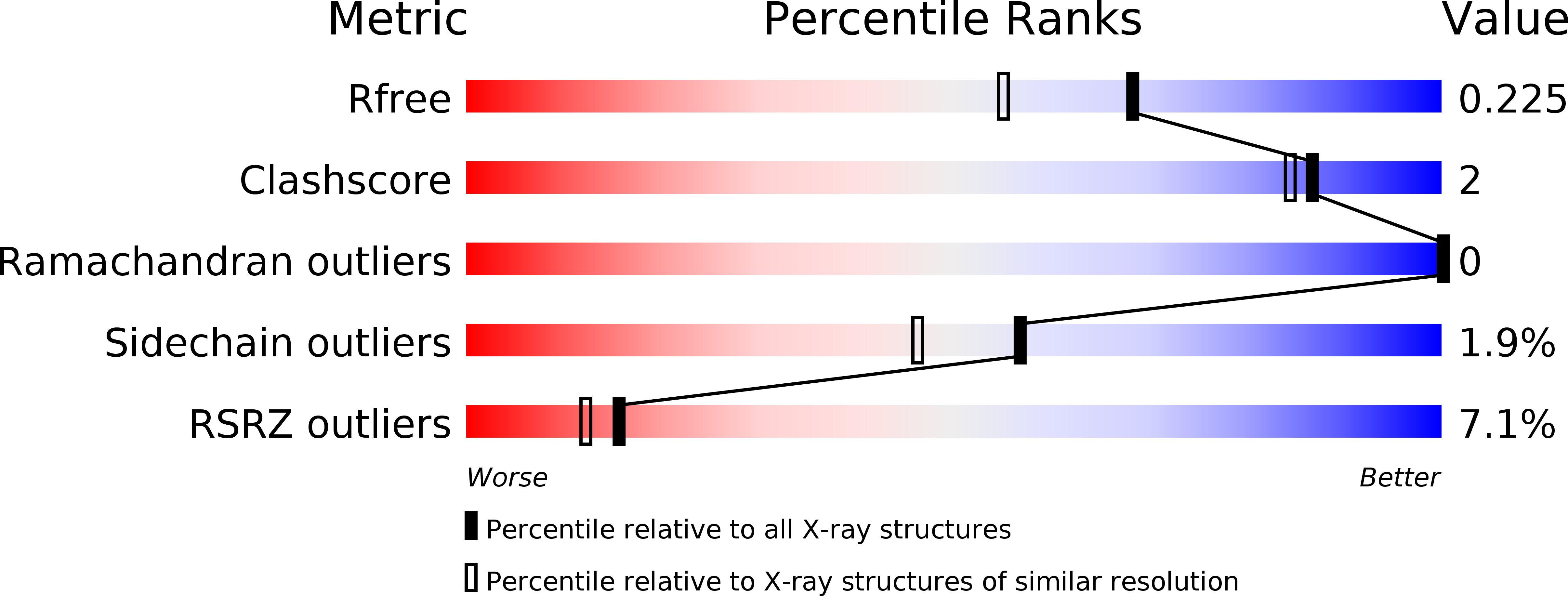
Deposition Date
2013-12-18
Release Date
2014-06-18
Last Version Date
2023-09-20
Entry Detail
PDB ID:
4O4B
Keywords:
Title:
Crystal Structure of an Inositol hexakisphosphate kinase EhIP6KA as a fusion protein with maltose binding protein
Biological Source:
Source Organism:
Escherichia coli (Taxon ID: 536056)
Entamoeba histolytica (Taxon ID: 885318)
Entamoeba histolytica (Taxon ID: 885318)
Host Organism:
Method Details:
Experimental Method:
Resolution:
1.80 Å
R-Value Free:
0.22
R-Value Work:
0.19
R-Value Observed:
0.19
Space Group:
P 21 21 21


